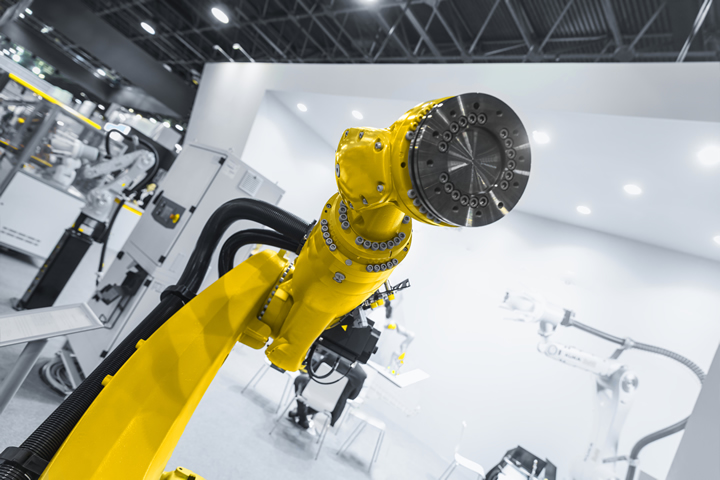4 Robotic Finishing Techniques for High-Precision Manufacturing Applications

Industrial robots enhance numerous processes, helping users save time, improve quality and reduce errors. Manufacturers invest in machines to handle robotic finishing techniques to scale up operations and get consistent results.
Grinding, deburring and shotblasting are among the most common applications. Some equipment also includes computer vision cameras that trigger adjusted movements to accommodate changing shapes. What are the best finish-related steps to automate, and which benefits have producers experienced?
1. Shotblasting and Painting Wind Turbines
The push to increase wind energy adoption requires making equipment surfaces resilient against moisture and harsh weather. The massive sizes of some turbine components make them excellent candidates for robotic finishing techniques. In one example, a construction and fabrication company selected a Danish firm to lead an automation project for shotblasting and painting its turbines.
The carefully planned system includes a 140-meter painting booth with an integrated robot, an automated shot-blasting machine and an industrial coatings package. Executives hope to use these robotic finishing techniques in their operations by 2026 and view the transition as a structural change that will boost operational efficiency.
The service provider assisting with this project also has extensive expertise in automated surface-treatment options for industrial applications. Those insights help decision-makers streamline their approach and prevent the most common pitfalls. The installation supports the construction and fabrication company’s efforts to integrate more technologies into mass production processes.
Because leaders expect these improvements to optimize material use, the benefits could create opportunities for them to reduce waste and raise recycling levels. Harder shotblasting materials support recyclability better than their softer counterparts, which can generate hundreds of pounds of dust hourly and clog parts of the equipment.
2. Grinding in Steel Processing and Fabrication Plants
Robotic finishing techniques can increase competitiveness, especially if executives target the most time-consuming steps. When the leaders at a steel processor and fabrication brand sought new ways to maintain the consistency customers expected, they invested in two artificial intelligence-powered grinding robots.
The goal was to increase precision while giving employees time for more valuable work. Because many industrial robots excel at repetitive tasks, they can reduce occupational risks like strains and sprains that raise absence rates and turnover. The specialized equipment cleans and finishes flame and plasma-cut parts, handling two of the most physically demanding steel-fabrication steps. The machines can do these tasks on both sides by activating an integrated flipper.
They can also remove lead-ins and slag, clean interior diameters, and grind or round edges. The executives believe that technology supports precise, consistent results. The leaders purchased these robots as part of an ongoing digital transformation strategy to facilitate the company’s commitments to quickly fabricating production-ready parts and achieving consistently high quality.
These robots work without programming, making them a wise choice for users who want to see the benefits as soon as possible. The equipment also features magnetic grippers to grasp parts and computer vision to identify those components’ shapes.
Employees elsewhere have added technology to their work in other pioneering ways, such as inspecting the finish quality of parts fabricated on the micrometer scale with augmented reality to meet clients’ strict requirements. Robotic finishing techniques can complement those process enhancements.
3. Ergonomically Challenging Tasks in Production Environments
Getting more work done despite fewer workers makes manufacturers more resilient to labor shortages. Better responsiveness to evolving conditions is one of the goals driving an AI-powered robotics company that empowers humans with intelligent automation. It specializes in cells that autonomously handle tasks such as grinding, coating, polishing and sanding.
Allowing automation to do these traditionally labor-intensive and ergonomically demanding duties can help businesses weather disruptive workforce shortages. Investors seem interested, as evidenced by the $45 million secured in a Series B funding round as of June 2024, resulting in more than $70 million raised to that point.
The brand’s solutions use physics-based AI systems to help producers meet rising global expectations and improve the outcomes for workers who usually handle intense manual responsibilities. The company’s proprietary technologies also result in robots that program themselves and remain responsive in diverse manufacturing environments. These characteristics facilitate throughput gains and enable companies to address industrial demands while maintaining high quality and dependability.
Leaders interested in these solutions should consider how well the equipment would fit into their current facilities and whether it will complement or replace what they already use. Planning gradual rollouts that give employees enough time to learn machine settings or new processes helps executives maximize their new assets and make workers feel confident about using them.
4. Collaborative Sanding for Better Woodworking Productivity
As decision-makers explore robotic finishing techniques, they frequently look for opportunities to augment human capabilities. Many employees have years of experience working with various materials, maintaining their value in manufacturing processes. Ongoing investments in strategic technologies target employee experiences, helping them use acquired knowledge to do better work.
One company developed a collaborative robot with a laser system that takes panel measurements during woodworking projects. The robotic arm also has a rectangular sanding tool. After a Canadian cabinetmaker adopted a custom solution from this brand, efficiency rose by 31%, and customers commented on the high-quality results.
The robotic vendor seeks to expand its offerings and has partnered with another manufacturer during this project. The participants share goals of helping producers automate their abrasive processes and improve metrics such as safety, quality, consistency and productivity. Because the new sander plugs into standard electrical outlets and comes fully assembled, purchasers can quickly begin experiencing the equipment’s benefits.
The compact footprint of the single-table configuration also fits most woodworking shops, but the double option simultaneously sands up to eight panels. These options give manufacturers more flexibility as they consider the best ways to incorporate robotics into existing processes.
Succeeding With Robotic Finishing Techniques
Manufacturing leaders interested in implementing robotic finishing techniques should carefully plan and focus on seamless integration. They should consider how these advanced technologies fit into their existing facilities and prioritize employee training. Robotic finishing techniques have the potential to maximize their value and empower workers to increase productivity and quality.
Featured Product

